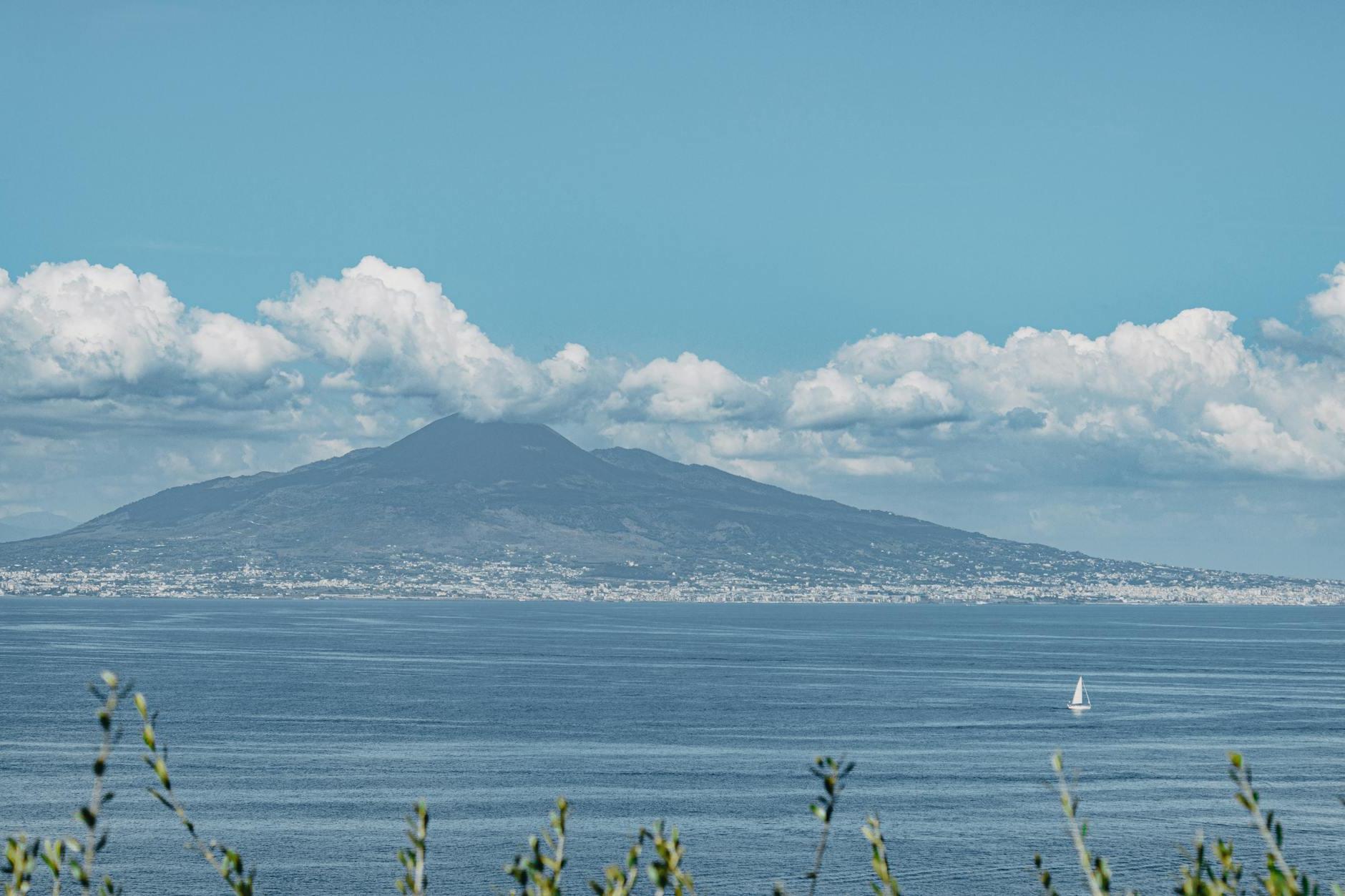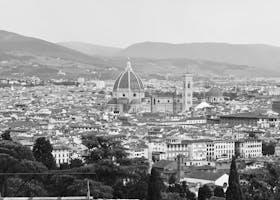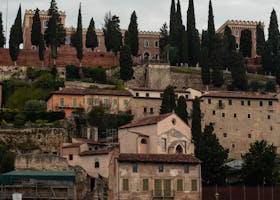Top 10 Must-See Attractions in Pompeii, Italy
Posted on June 3, 2024 • 10 minutes • 1921 words
Table of contents
Welcome to Pompeii, Italy! This ancient city, buried by the eruption of Mount Vesuvius in 79 AD, holds incredible secrets waiting to be discovered. As you stroll through its streets, you’ll uncover well-preserved ruins that whisper tales of a bygone era. While spring and autumn are popular times to visit due to the mild weather and vibrant landscapes, there’s truly something special to see all year round. Join us as we explore the top 10 must-see attractions in Pompeii! Whether you’re a history buff, a casual traveler, or an archaeology enthusiast, Pompeii promises to captivate and leave you in awe.
10 best things to see in Pompeii
10. Lupanar
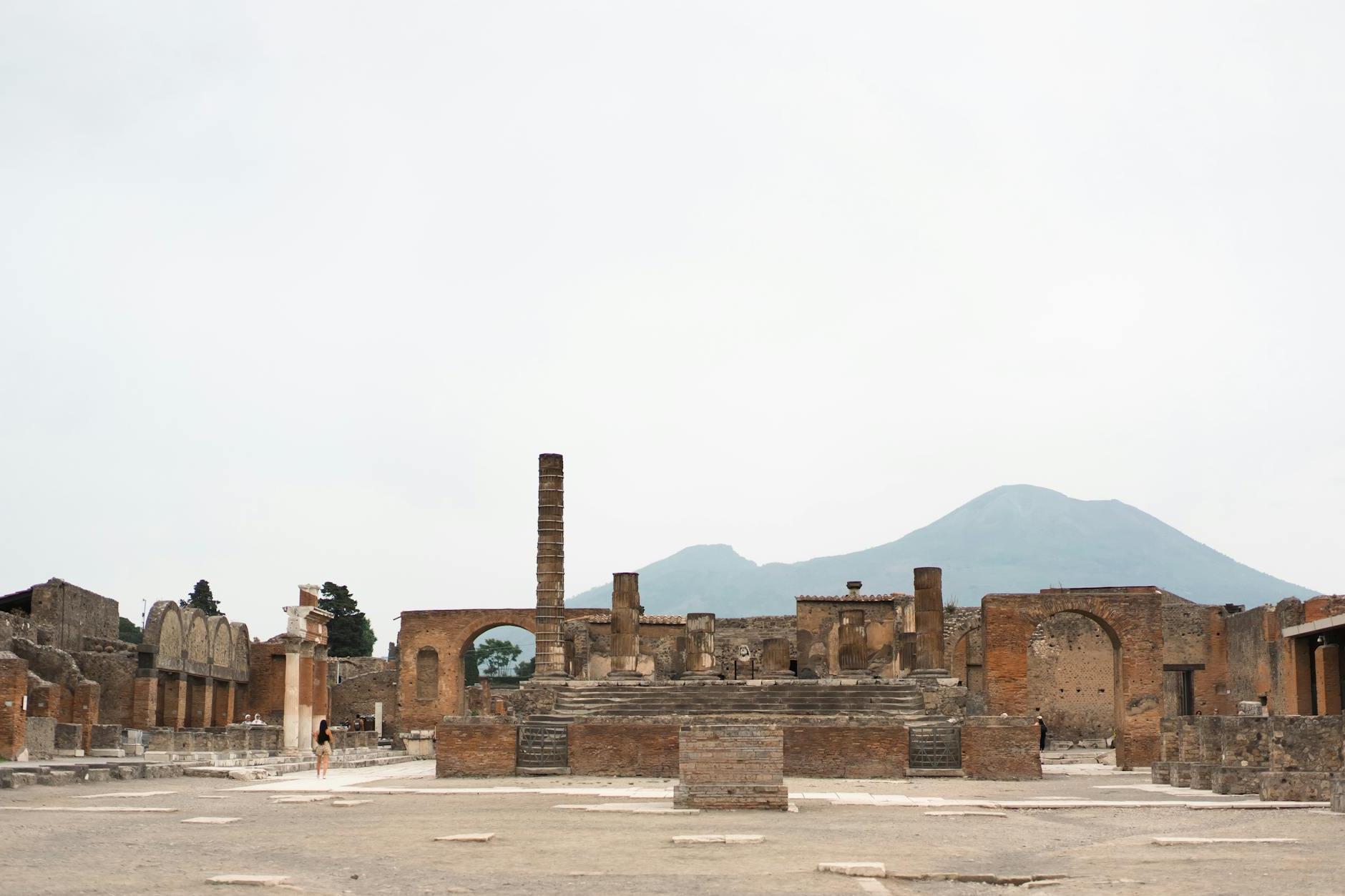
When visiting Pompeii, make sure to check out Lupanar, the ancient city’s most famous brothel. This intriguing site offers a unique glimpse into the daily life and culture of Pompeii before the eruption of Mount Vesuvius in 79 AD. You can explore the small rooms with stone beds and check out the explicit frescoes that decorated the walls, giving you an idea of how this part of society functioned. To get to Lupanar, follow the main street, Via dell’Abbondanza, and look for signs pointing towards it. Pay attention to the line of guiding stones on the road and the well-preserved signage that will lead you right to the entrance. Remember, this site can be crowded, so arrive early to fully appreciate its historical significance without feeling rushed.
9. Temple of Apollo
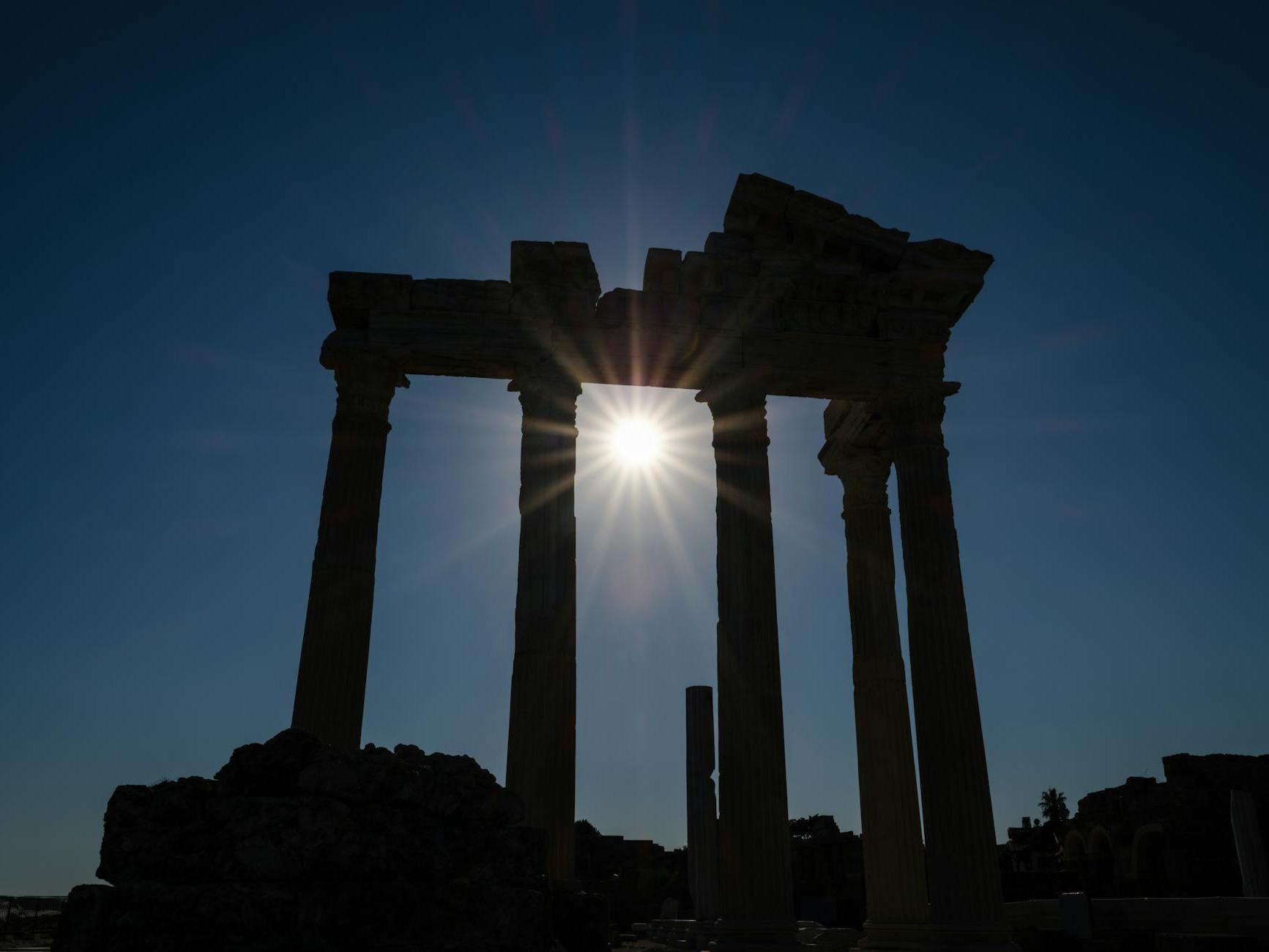
When you’re in Pompeii, visiting the Temple of Apollo is a must. It’s one of the oldest and most important religious sites in the ancient city, giving you a real sense of history. You’ll be amazed by the well-preserved columns and the remains of the large altar. Getting there is straightforward; start at the main entrance of the archaeological park and follow the signs, as the temple is located near the Forum, the heart of Pompeii. Make sure to pay attention to the unique mix of Greek and Roman architectural styles, and check out the statues of Apollo and Diana. These details help you imagine what life was like thousands of years ago. Enjoy your journey back in time!
8. House of the Tragic Poet
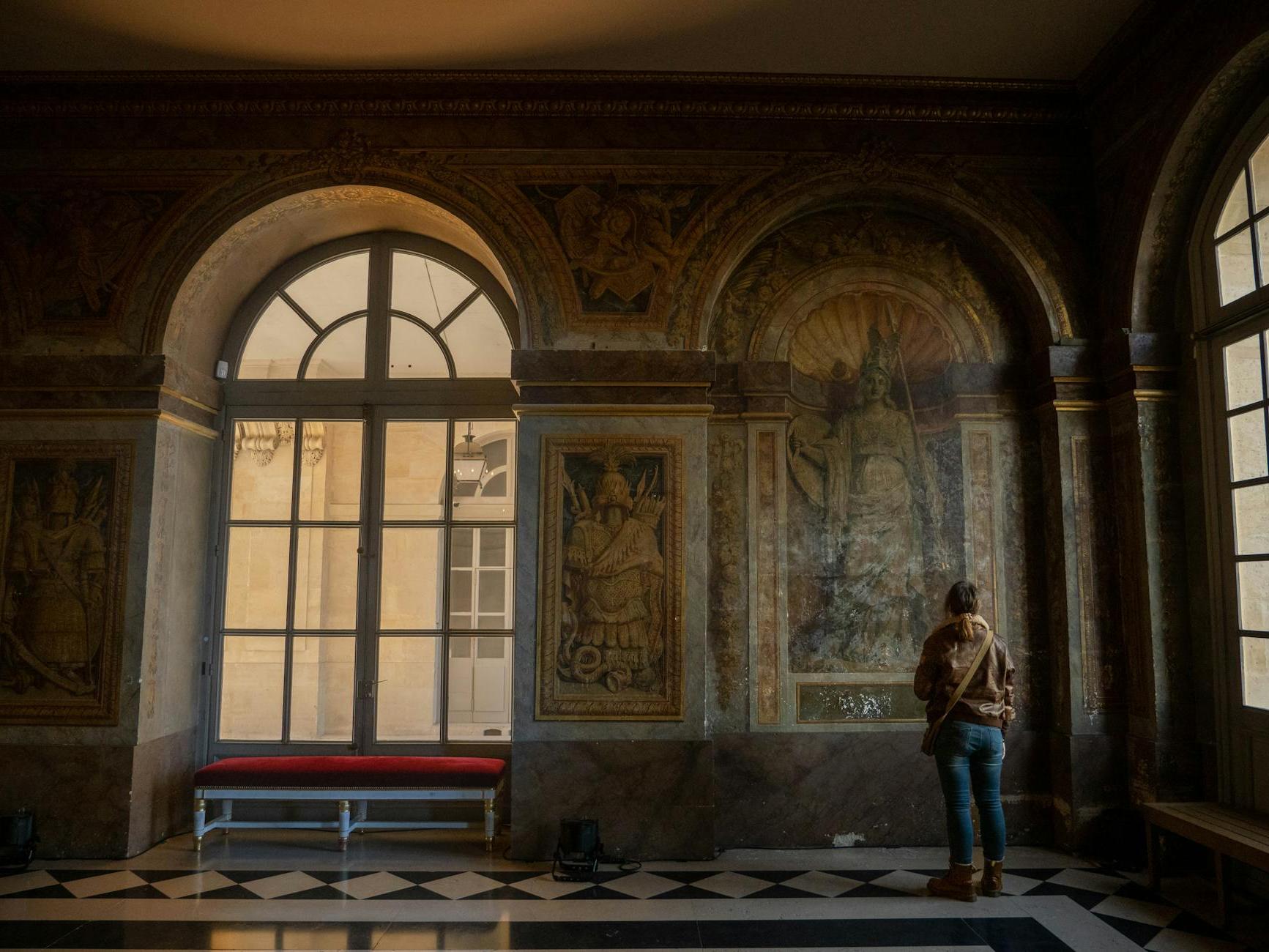
When visiting Pompeii, make sure to stop by the House of the Tragic Poet. This ancient Roman house is famous for its beautiful and detailed mosaics and frescoes. As you explore the ruins, you’ll see artworks that give you a glimpse into the daily life and culture of the people who lived there. To get to the House of the Tragic Poet, you can take a guided tour from the main entrance of Pompeii. Look for the detailed mosaic at the entrance, which shows a guard dog with the words “Cave Canem” (Beware of Dog). Inside, pay special attention to the intricate floor mosaics and the vivid wall paintings that depict various mythological scenes. This visit will transport you back in time and make your Pompeii trip truly unforgettable.
7. Pompeii Amphitheater

When you visit Pompeii, the Amphitheater is a must-see! Built in 80 BC, it’s one of the oldest Roman amphitheaters and offers a fascinating glimpse into ancient Roman life. Here, you can imagine the grand gladiator battles and public spectacles that once entertained thousands. Getting there is easy: from the Pompeii Scavi-Villa dei Misteri train station, it’s just a short walk to the entrance of the archaeological site. Make sure you don’t miss the stunning frescoes and the nearby Palaestra, where athletes used to train. Wear comfortable shoes, as the paths can be uneven, and bring water because there’s a lot to explore!
6. Garden of the Fugitives
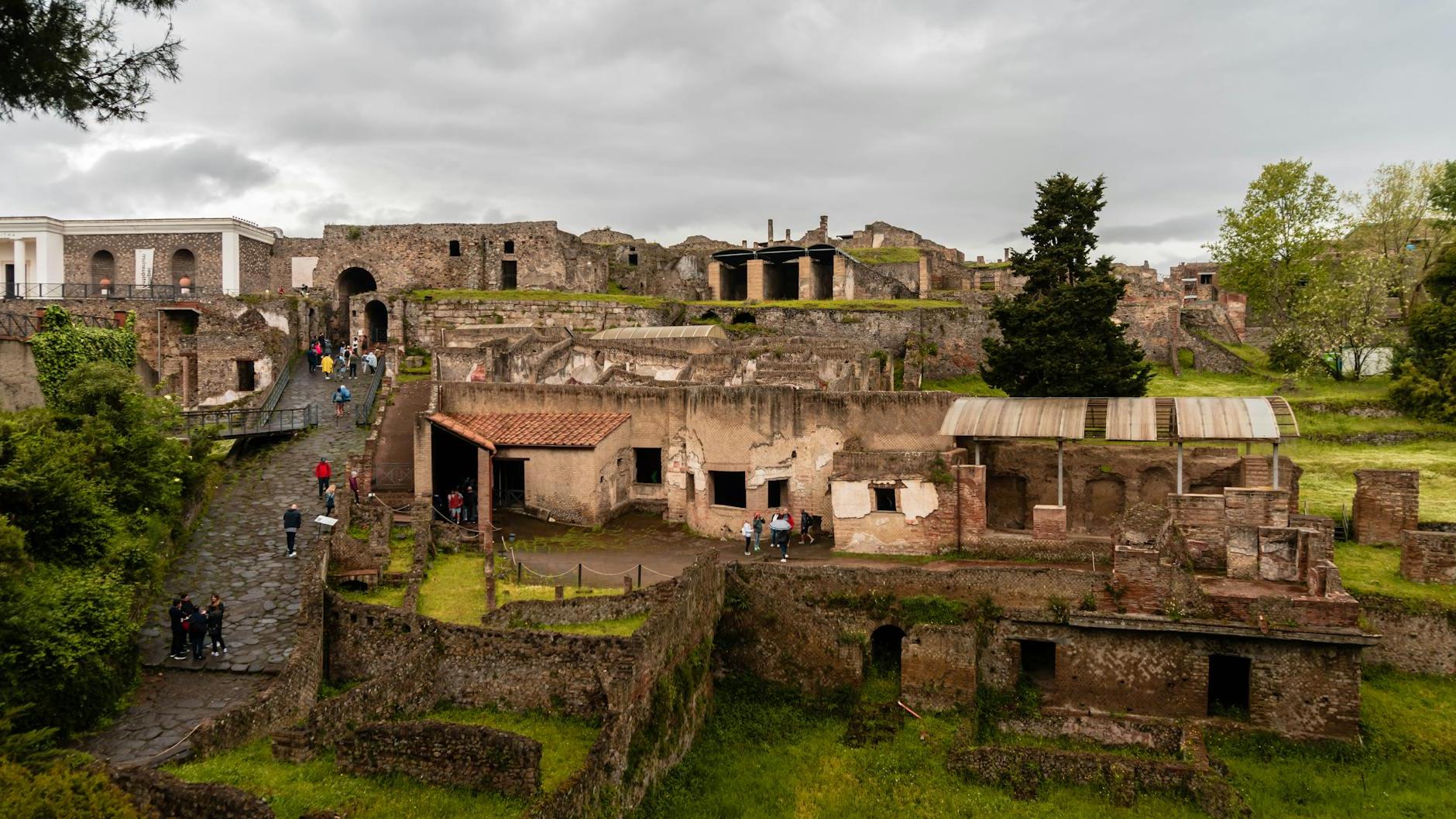
When visiting Pompeii, you should definitely check out the Garden of the Fugitives. This site is both fascinating and sobering, as it displays the casts of 13 people who tried to escape the eruption of Mount Vesuvius in 79 AD. These casts, made from impressions left in the volcanic ash, offer a poignant glimpse into the tragic past and remind us of the powerful forces of nature. To get there, you can take a train from Naples to the Pompeii Scavi-Villa dei Misteri station, which is just a short walk from the archaeological site. Once inside Pompeii, follow the map to find the garden, located in the southern part of the ruins. Pay close attention to the casts and the surrounding garden layout, which adds a touch of tranquility to this emotional experience.
5. Stabian Baths
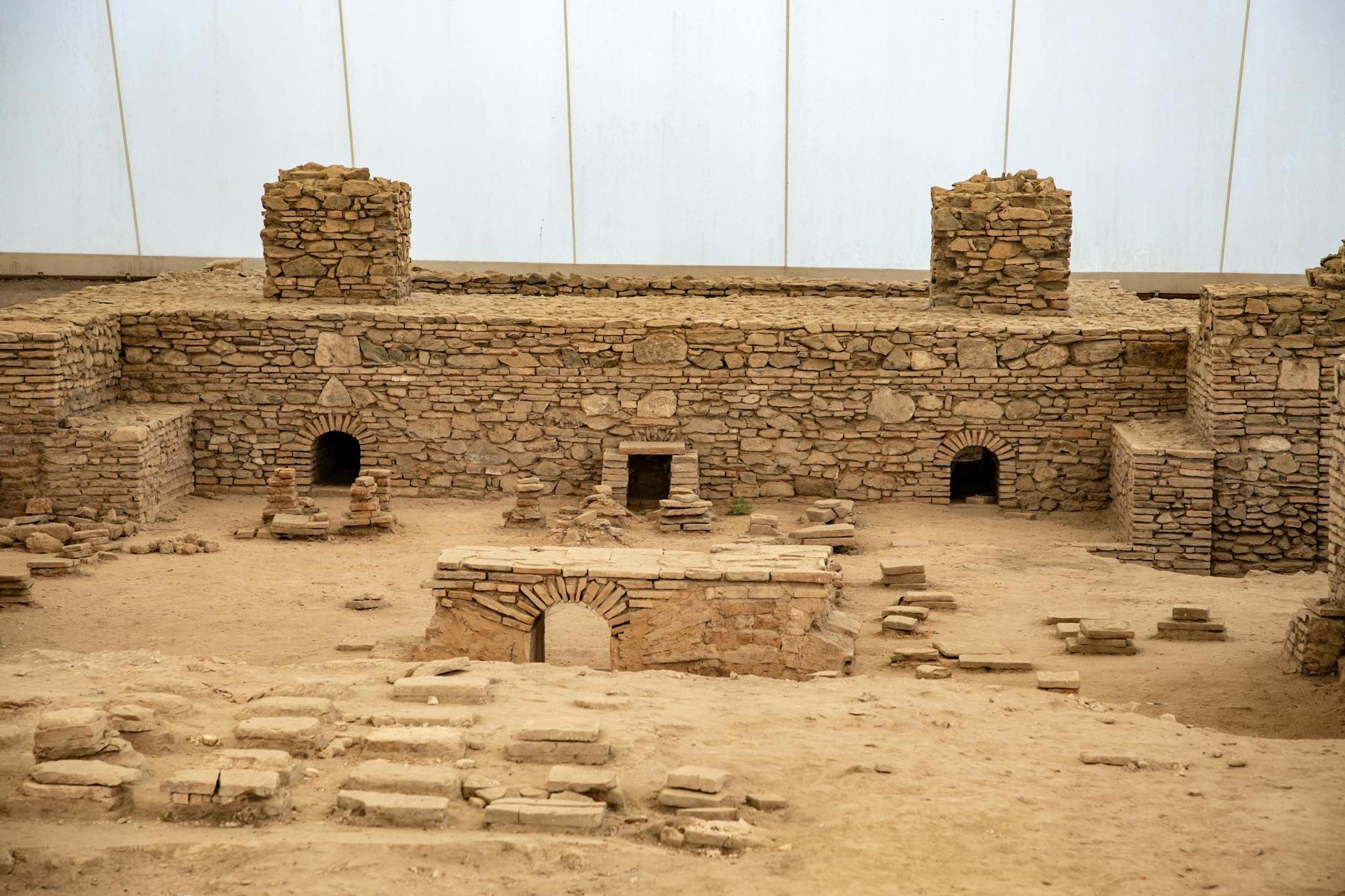
When you visit the ancient city of Pompeii, make sure to stop by the Stabian Baths. These baths are one of the oldest and most fascinating parts of Pompeii, showcasing the advanced engineering and daily life of the Romans. You can marvel at the well-preserved structures, including hot and cold baths, a gym area, and stunning frescoes. Getting there is easy; once you enter Pompeii, follow the signs towards Via dell’Abbondanza, one of the main streets, and you’ll find the Stabian Baths nearby. Pay close attention to the intricate mosaics and the unique ceilings in the bathing rooms. They give you a glimpse into how luxury and everyday life intertwined in ancient Roman culture.
4. House of the Faun
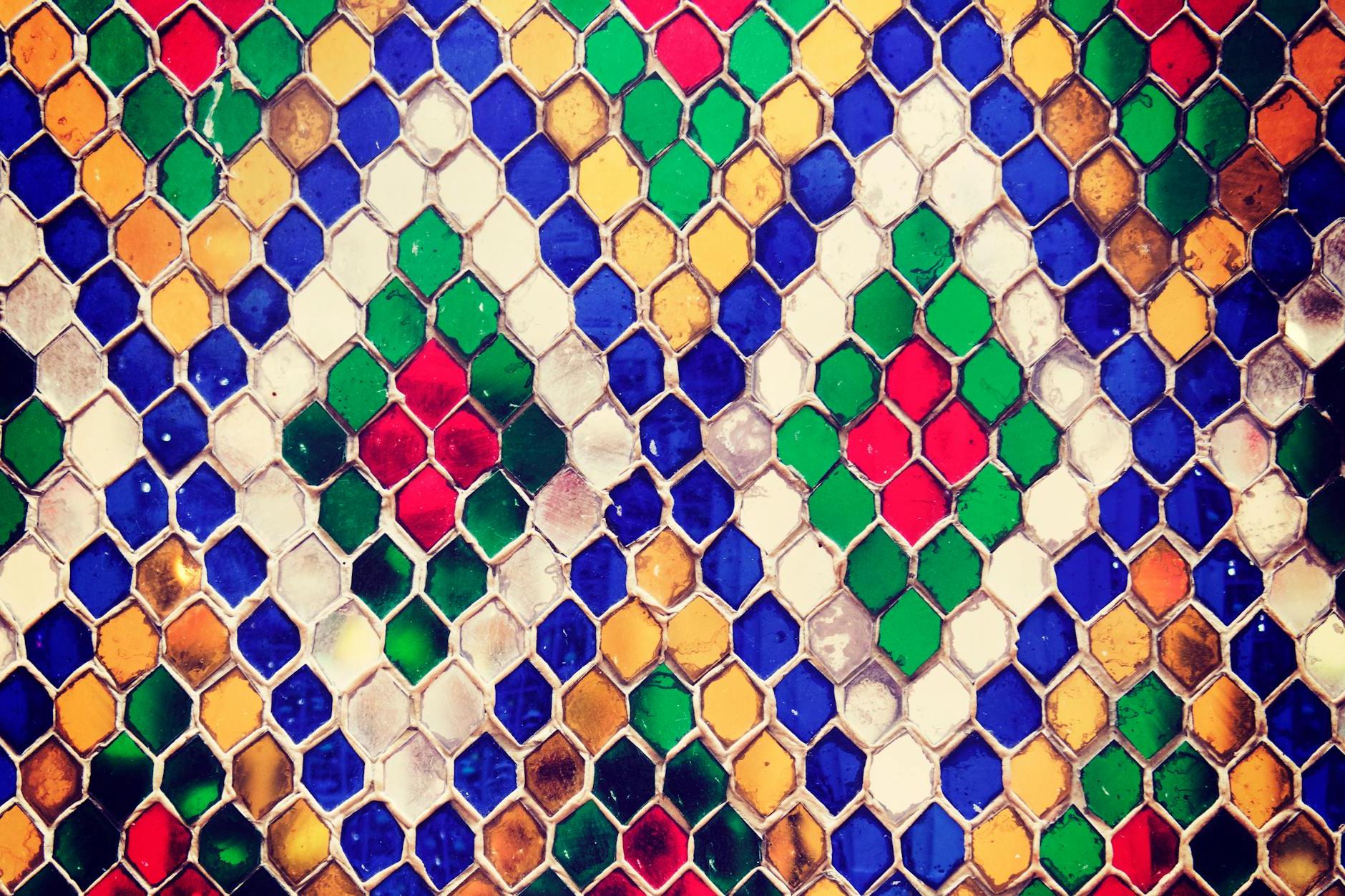
When visiting Pompeii, make sure to explore the House of the Faun, one of the city’s largest and most luxurious homes. This ancient Roman residence is famous for its stunning mosaics, including the “Alexander Mosaic” depicting Alexander the Great in battle. You can reach Pompeii easily from Naples by taking a train on the Circumvesuviana line to the Pompeii Scavi-Villa dei Misteri station. Once inside the archaeological site, follow the signs to the House of the Faun, located on Via della Fortuna. Pay attention to the intricate designs on the floors and the beautiful statues that once adorned this wealthy family’s home. A visit here offers a unique glimpse into the lavish lifestyles of ancient Pompeians.
3. Villa of the Mysteries
When you visit Pompeii, you should definitely make time to see the Villa of the Mysteries. This ancient Roman house is famous for its amazingly preserved frescoes, which show mysterious rituals and ceremonies, giving you a unique glimpse into life 2,000 years ago. The Villa is located just a short walk from the main entrance of the Pompeii archaeological site, so it’s easy to get to. As you explore, pay close attention to the vibrant wall paintings in the triclinium (dining room), where scenes are believed to depict initiation rites of a secret cult. Don’t miss the stunning details and the vivid colors that have survived the volcanic eruption, as they are truly a highlight of any visit to Pompeii.
2. Forum
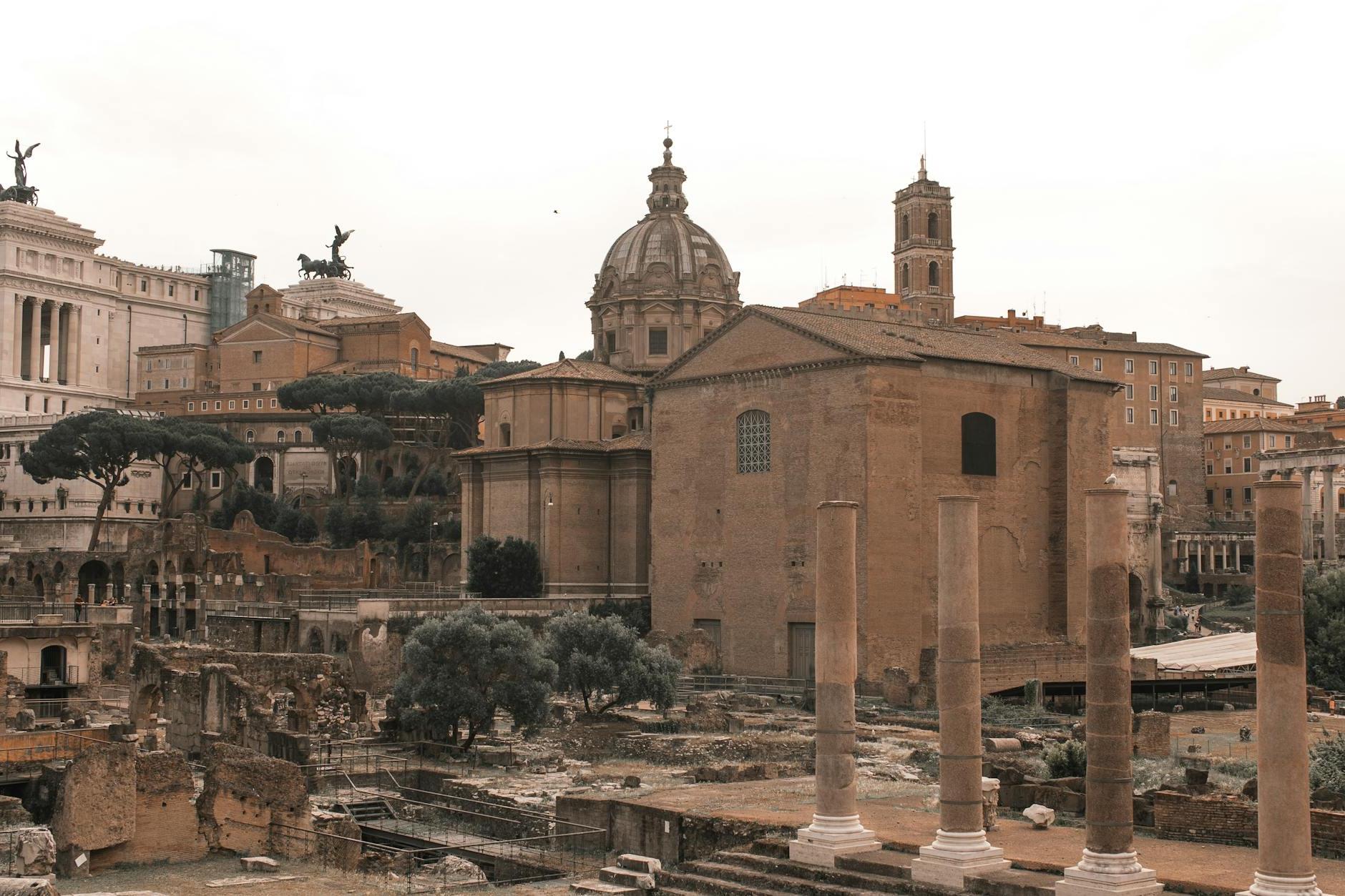
When you visit Pompeii, one of the must-see spots is the Forum. This ancient marketplace was the heart of the city’s social, economic, and political life. As you walk through the Forum, you’ll feel like you’re stepping back in time, surrounded by the ruins of temples, public buildings, and statues. To get to the Forum, you can enter Pompeii through the Porta Marina entrance, which is close to the main train station. Just follow the signs, and you’ll find yourself in this bustling ancient center. Pay special attention to the Temple of Jupiter and the Basilica, where locals once gathered for religious ceremonies and legal matters. Don’t forget to look around and imagine what life was like in this lively square almost 2,000 years ago.
1. The Basilica

When you visit Pompeii, don’t miss a trip to The Basilica. It’s one of the oldest and most important public buildings in the ancient city. The Basilica was used for business and legal matters, so it’s a key piece of history that gives you insight into Roman life. To get to The Basilica, just follow the main street, Via dell’Abbondanza, from the entrance of the archaeological site. It’s located near the Forum, the heart of Pompeii. Make sure to take note of the impressive columns and large open space inside, which were groundbreaking in their time. Also, keep an eye out for the intricate details in the architecture, which highlight the craftsmanship of that era. The Basilica is not just a building; it’s a portal to understanding the everyday life of ancient Romans.
Frequently Asked Questions
1. What is the best time of the year to visit Pompeii?
The best time of the year to visit Pompeii is from late March to early June and from September to October. During these months, the weather is pleasantly warm, making it ideal for exploring the ancient ruins without the scorching summer heat. The spring and fall also bring fewer tourists, allowing you to enjoy a more relaxed experience. Alternatively, visiting in the winter months, from November to February, can be more economical. While it might be cooler and rainier, you’ll find lower prices and even fewer crowds, giving you a chance to immerse yourself in the history of Pompeii at a more leisurely pace.
2. Should I rent a car in Pompeii?
When deciding whether to rent a car in Pompeii, consider the local road and traffic conditions. The roads in and around Pompeii can be narrow and crowded, especially near major tourist attractions. Finding parking can also be challenging, with limited spaces that fill up quickly. Instead of navigating these hassles, you might find public transport a simpler option. Trains run frequently from Naples and Sorrento to Pompeii, making it easy to reach by rail. Taxis and ride-sharing services are also available and can be convenient for short distances or if you prefer a more direct route. Overall, unless you plan to explore the broader region, it might be best to rely on public transport and taxis to get around.
3. What are different ways to get to Pompeii?
Getting to Pompeii is quite straightforward, with several options available. If you’re flying, the closest airport is Naples International Airport (NAP), just about 25 kilometers away. From Naples, you can take the Circumvesuviana train directly to Pompeii Scavi-Villa dei Misteri Station, which is right by the ruins. Buses also run regularly from Naples and other nearby towns. If you prefer driving, you can rent a car and take the A3 motorway. From Rome, for example, it’s about a 2.5-hour drive south. Whether by plane, train, bus, or car, you’ll find it easy to reach the ancient city of Pompeii.
4. Are there things to do with children in Pompeii?
Absolutely, there are plenty of things to do with children in Pompeii! This ancient city offers a unique blend of history and exploration that can be fascinating for kids. Start by visiting the Pompeii Archaeological Park, where children can wander through well-preserved ruins and imagine life in Roman times. The colorful frescoes and mosaics can captivate their imaginations. Don’t miss the House of the Vettii, where you can see ancient artwork up close. There are also many open spaces perfect for a family picnic. For a more hands-on experience, some tours offer interactive activities, like simulated archaeological digs, which can be both fun and educational for kids.
5. Is Pompeii safe to travel to?
Yes, Pompeii is generally safe to travel to. The historic site attracts millions of tourists each year and has a good reputation for safety. However, like any popular tourist destination, petty crimes such as pickpocketing and scams can occur. To stay safe, keep your valuables out of sight, be mindful of your surroundings, and avoid overcrowded areas where pickpockets are more likely to operate. Taking basic precautions will help ensure a safe and enjoyable visit to this ancient city.

